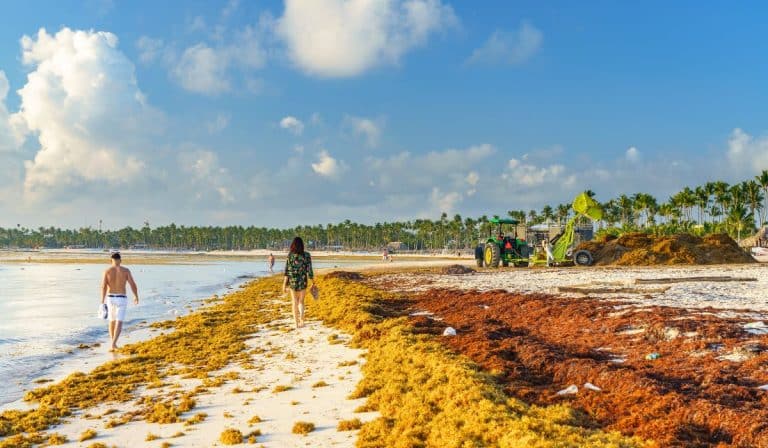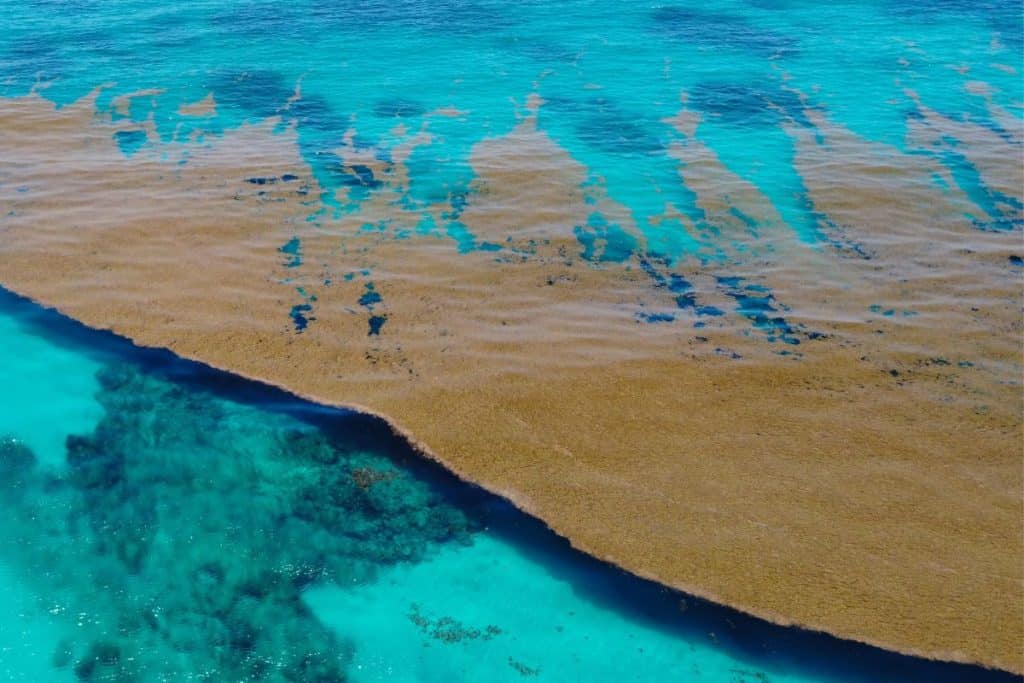The Minister of Tourism, David Collado, assured that the government, the private sector and universities are doing their best to minimize the impact of sargassum on the coasts of the Dominican Republic.
“We are working intensely to find a short, medium, and long-term solution to this problem that affects beaches, and not only in the Dominican Republic,” he said at the end of a cabinet meeting to combat sargassum.
Collado explained that they are working on a strategy for environmental technicians and other institutions to present a concrete plan to the country.
He also reported that he would provide 1 million dollars to the country’s universities to strengthen research on sargassum.
The minister stated that he will soon inform the public about the measures that will be taken in the short term.
Meanwhile, Minister of Environment and Natural Resources and Coordinator of the Cabinet, Miguel Ceara Hatton, said that a team has been formed to monitor the sargassum problem day by day and will submit a report to the Cabinet on how it will achieve results and look for solutions in the medium term.
At the meeting, members of the Cabinet made proposals and spoke about the progress and research results they have achieved in combating the sargassum problem in countries of the region.
David Llibre, President of the Hotel and Tourism Association (Asonahores), was present at the meeting, and an Inter-American Development Bank (IDB) representative also attended.
The Cabinet to Combat Sargassum is working on a short-term strategy to respond to the threat of this seaweed on the beaches of the Dominican Republic during the months of March and April.
This cabinet was created by decree last August to propose and coordinate the execution of public policies aimed at reversing the effects of this seaweed that infests the beaches and coasts of the Great Caribbean.
Sargassum Forecast for 2024
The University of South Florida Optical Oceanography Lab reports a significant increase in sargassum bloom, reaching record levels in 2024. With one million metric tons in November and a staggering five million tons by December in the central Atlantic, experts predict another major sargassum year. Over the past decade, there has been a notable rise in both size and damage caused by these blooms, with 13 million tons reported last year.
While the Caribbean Sea currently has a comparatively small amount, scientists anticipate its spread, potentially affecting Florida and the Gulf of Mexico in the upcoming months. The Florida Department of Health warns beachgoers to avoid contact with sargassum due to its potential to cause skin irritation from jellyfish larvae and advises precautions such as closing windows and wearing gloves if handling the seaweed to prevent respiratory issues and unpleasant odors.


